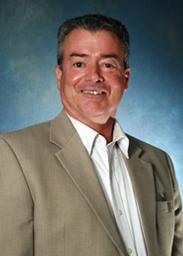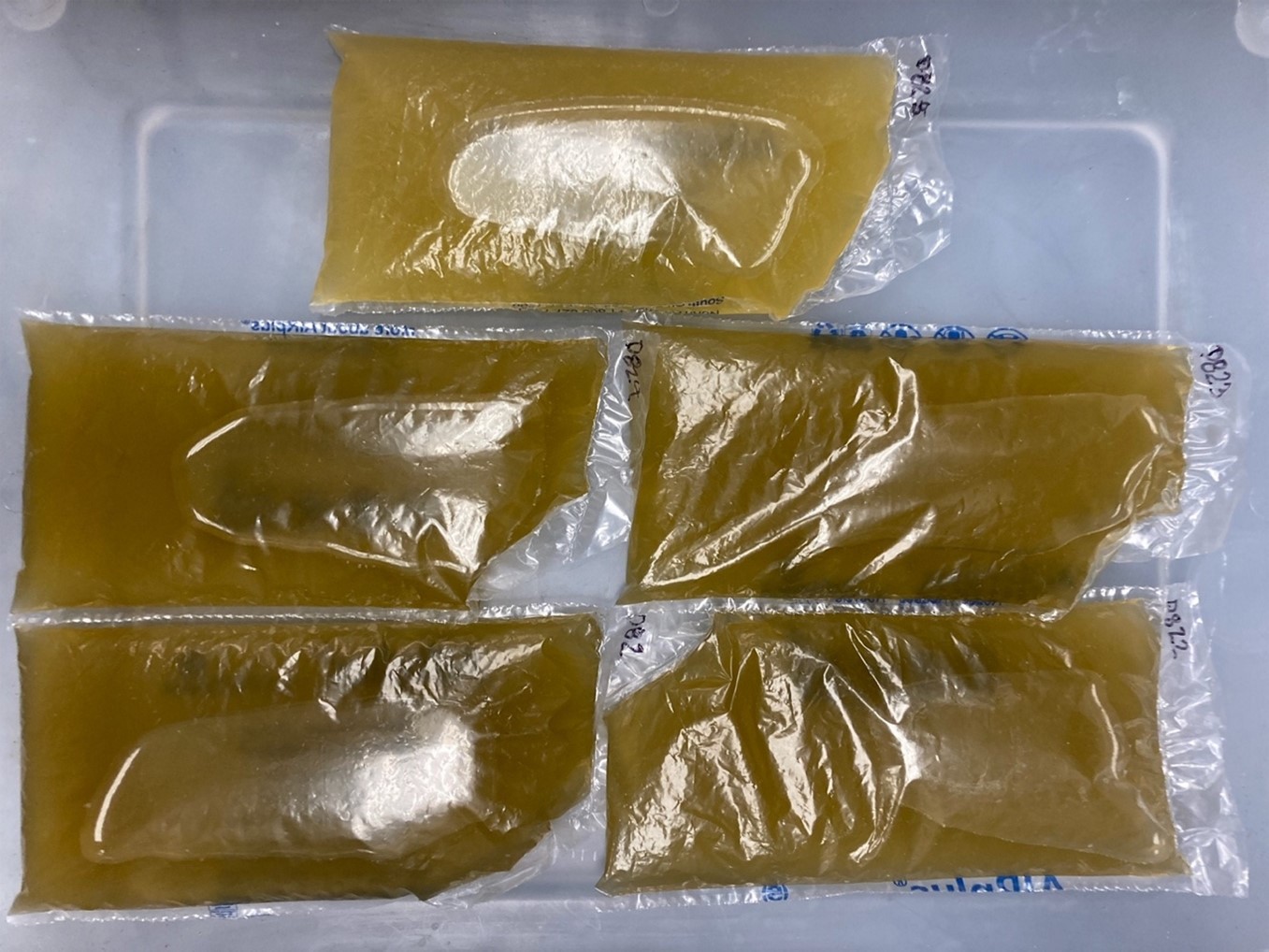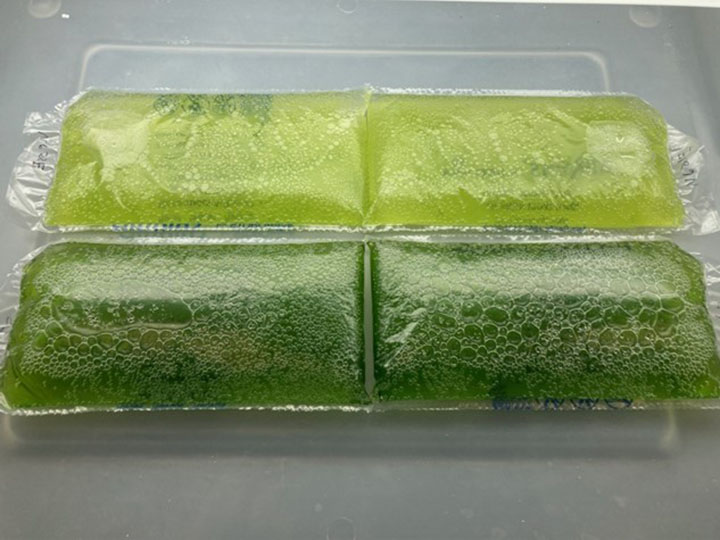By: Carlyn Scott, Science Communications Assistant
Cultivating algae for use as biofuel, protein-rich food for aquaculture, and other biomaterials is a growing field. Scientists and engineers have designed photobioreactors, systems used to cultivate photosynthesizing algae, with a range of materials such as plastic and glass, in a wide range of locations, from open ponds to small beakers in the lab. University of South Florida (USF) College of Marine Science researcher Cliff Merz had a new idea to add to the mix: re-using air-cushion packaging that protects products during shipping.

Clifford R. Merz, Senior Research Faculty Ocean Engineer
Could these commercially available plastic bags, already in the homes of millions, have a second (more productive) life as an algae photobioreactor? As published recently in Nature Scientific Reports, Merz and a team of USF collaborators say “Yes.”
Merz’s collaborators included Neha Arora from the USF Department of Cell, Microbiology and Molecular Biology, and Michael Welch, Enlin Lo, and George Philippidis from the USF Patel College of Global Sustainability.
Merz said the idea came to him when he noticed how much plastic is added to packages he receives. He had taken a course in algae cultivation a few years ago, and photosynthesis was on his mind. (See, for example, his other publication on bubble farming.)
“The fact that all these packing materials are everywhere I couldn't help but think, could I grow algae in there? These air-cushions accompany all of my packages, so the material is free,” Merz said.
While plastic photobioreactors have been used for algae cultivation in the past, this concept of repurposing these readily available materials is new.
But would this type of plastic allow for the diffusion of gases that would be necessary to produce algae? In a delicate balance, the plastic membrane must be permeable enough to allow for carbon dioxide to come in and oxygen to go out, said Merz. “Otherwise, if the oxygen builds up and cannot escape the system, it can potentially stunt or kill the algae,” he said.
In the end, it worked out fine. The three types of freshwater and marine algae microalgal species, Chlorella vulgaris, Nannochloropsis oculata, and the diatom Cyclotella cryptica, grown in the air-cushion system produced as much (or more) lipids, carbohydrates, and protein as traditional methods.
“The value of this study is that we demonstrated that this particular low-density polyethylene is a good membrane candidate for growing algae,” Merz said.

The diatom C. cryptica cultivated in air-cushions.
The repurpose and reuse of air-cushions as photobioreactors also avoids some issues with other cultivation methods. They are low cost, provide an isolated, contaminant-free environment for the algae, and prevent predation, which is a challenge in larger open-air operations such as race-way ponds.
There is even potential to re-use the cushions again and again for algae cultivation, Merz said.
This is not Merz’s first foray into repurposing otherwise wasted materials. He also has investigated alternate uses of chitin, a bio-waste from marine crustaceans, cephalopods, and some microalgae (diatoms), into permeable membranes with the potential for salinity gradient power generation or extraction of materials from seawater.
Overall, Merz sees this study as a proof of concept. While this method may not supplement biofuel needs of larger scale productions, it could be beneficial for cultivating specialized molecules on a smaller scale.
“I hope we can take this study as inspiration,” Merz said. “There are likely many products we readily use that can be re-purposed in innovative ways,” he said.
